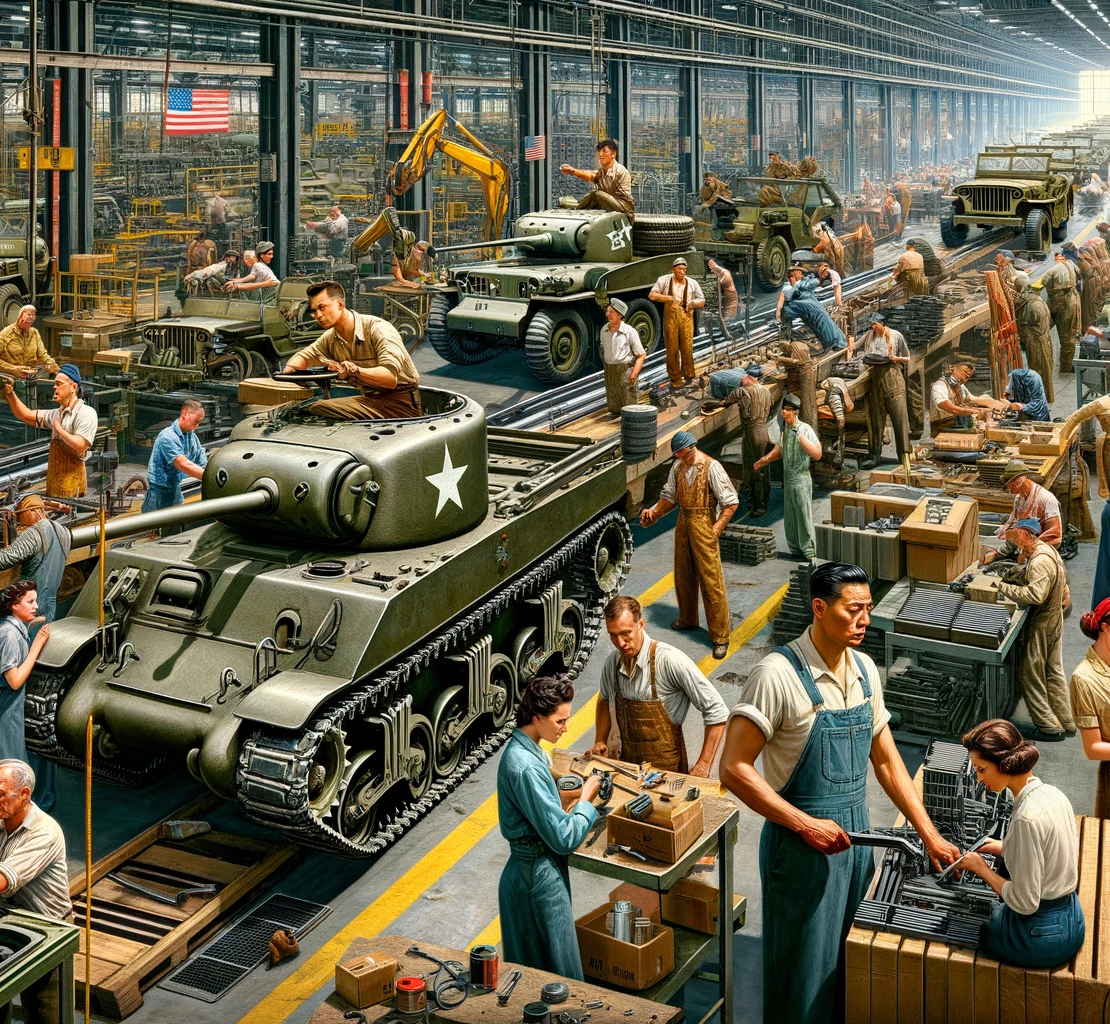In the face of ever-evolving global threats, it is crucial that we reevaluate the role of American manufacturing in safeguarding our national security. The underlying assumptions of world power in the last 25 years have shifted, and our ability to respond to these challenges must adapt accordingly. This kind of rethinking of strategy is the underlying thesis in our inaugural Grayline Publishing book, Catalyst: Leadership and Strategy in a Changing World. The below article delves into the pressing need to rethink American manufacturing and discusses how best to address the growing threats from around the world.
The Changing Landscape
The current global landscape demands a reevaluation of our manufacturing capacity. The rise of China as a manufacturing powerhouse poses a significant challenge, but it is not the sole concern. Equally important is the undeniable decline in the U.S. defense-industrial base since the beginning of this century.
To comprehend the gravity of this situation, consider the concept of the “Arsenal of Democracy.” It goes beyond military size and spending; it signifies a nation’s ability to produce military equipment when required, especially in the event of a protracted conflict with a formidable adversary. As we have witnessed in Ukraine, we may be able to support quickly with our reserve stocks of equipment and ammunition, but what happens when those stores run out? According to Kevin Landtroop, a dual-use technology policy expert at Grayline Group, “In 1953 when Eisenhower took office, the entire national strategy was built around nuclear deterrence and the missile gap or deterrence gap.” At the same time, President Eisenhower felt the pressures from the Army and Navy to expand the conventional force capability. There was no questions about need for large military spending. The question was how best to incentivize it.
It’s not surprising (but sometimes misunderstood) that when President Eisenhower warned us of the Military Industrial Complex in his farewell address, what he seemed to be signally was that overspending on the US Military was actually detrimental to long-term security if it distracted from economic stability or a robust domestic manufacturing capacity. Landtroop concludes, “I find it particularly poignant that this sentiment comes from the man who commanded the most massive and successful military campaign in the history of the world.”
The Vanishing Arsenal of Democracy
The term “Arsenal of Democracy” was epitomized during World War II and the Cold War when the United States was the dominant producer of military equipment. It was a time when American war production played a pivotal role in defeating fascist empires, safeguarding the free world, and curbing rogue states. Our industrial might was unparalleled, and this dominance extended into the Cold War with the inclusion of key manufacturing nations such as Germany and Japan as U.S. allies.
However, since the turn of the century, our defense-industrial base has witnessed a worrying decline. Our ability to produce critical defense equipment has diminished significantly, leaving us vulnerable to global challenges.
The Imperative to Act
Restoring the Arsenal of Democracy is not just an economic or industrial matter; it is a matter of national security. Our over-reliance on service industries and neglect of manufacturing has made us susceptible to external threats. To ensure the safety of our nation and its allies, we must rethink American manufacturing.
A Call to Action
Noah Smith wrote a must read: “Revitalizing the Arsenal of Democracy: A Strategic Blueprint for the Future“– He starts with this graphic below that shows in the last 70 years we have moved to half the world living in a democracy. But he asserts it is also worth noting that it was military might and resources that beat back the forces of autocracy. The question for us to think through, are we still ready?
With Russia invading the Ukraine, Hamas striking into Israel, Syria and Iran are always a problem…. Are we reading if China were to act on their autocratic tendencies?
In a world where geopolitical dynamics are rapidly shifting, the United States must reassert itself as the “Arsenal of Democracy.” Noah Smith writes there are key steps to achieve this:
1- Utilize the Defense Production Act: Ramp up manufacturing for essential defense components.
2- Global Collaboration: Partner with allies for efficient naval production.
3- Industry Revival: Focus on enhancing domestic shipbuilding and drone industries.
4- Military Tech Modernization: Invest in cutting-edge technologies for future warfare.
5- Overhaul Defense Contracting: Promote competition and innovation in defense procurement.
6- Smart Defense Spending: Allocate funds strategically to foster a robust defense industrial base.
7- Manufacturing Resurgence: Strengthen the manufacturing sector for long-term defense readiness.
Noah’s article is powerful and really speaks to us at Grayline Group because of the work we do working with companies and start-ups that give us greater capacity in the National Security arena. The best example of that is Sustainment. As they write on their website about the mission statement:
This is a historic opportunity for the US manufacturing industry. Advances in technology and increasing geopolitical risk makes domestic production more attractive than it has been in decades. To capitalize on the moment, we developed a next-generation technology platform that connects local and regional suppliers into the most efficient, effective, and competitive market network in the world.– Sustainment.com
Conclusion
The disappearance of the Arsenal of Democracy is a cause for concern that should resonate with every American. In a world marked by shifting geopolitical dynamics and growing threats, safeguarding national security demands that we reassess our manufacturing capabilities. It was American Industry that helped us in World War II and the Cold War to out build and out last our adversaries.
By investing in manufacturing, streamlining processes, reskilling our workforce, building global partnerships, and embracing innovation, we can once again become a formidable force on the world stage. As Marc Andresssen wrote in a famous essay, It’s Time to Build. The time to rethink American manufacturing is now, and it’s a responsibility we all share to ensure a safer and more secure future for our nation and the world.
Joseph Kopser is a lifelong problem solver committed to building the teams needed to take on our toughest challenges. He is currently President of Grayline after he co-founded and served as CEO of RideScout, before it was acquired by Mercedes. He is also a liaison for military & veteran affairs at the University of Texas. He served in the U.S. Army for 20 years earning the Combat Action Badge, Army Ranger Tab and Bronze Star. He is a graduate of West Point with a BS in Aerospace Engineering and also received a Masters from the Harvard Kennedy School and former member of the Army Science Board. He was recognized as a White House Champion of Change for his efforts in Energy and Transportation as well as won the U.S. DOT Data Innovation Award. He co-authored the book, Catalyst, a book focused on helping teams adapt to change. He is the Chair of the Board of Advisors for the CleanTX, an economic development and professional association for cleantech.
Join the Catalyst Monitor
Join our community, where we push out regular insights to help maintain situational awareness on technological and socioeconomic trends.



